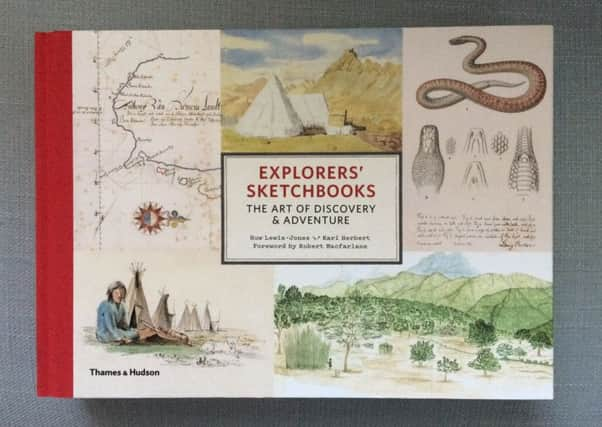Forget Twitter - for serious explorers the notebook is still king


Leafing through the book’s lavishly-illustrated pages, however, you can’t help but wonder: now that anyone who has enough cash can hop on a plane to wherever they want, snap an exotic-looking picture with a digital camera and upload it to Twitter in the blink of an eye, replete with witty caption, have we become less able to fully appreciate the world around us? Is there still something to be said for the slower, more thoughtful process of recording our experiences by hand, using good, old fashioned paper and ink? It’s something Herbert and Lewis-Jones touch upon in their introduction to the book, when they ask: “Have we lost the narrative art of travel?”
“It is often said that the skill of letter writing is dead,” they continue. “In a world of email and instant communication it would be fair to think that the practice of keeping a journal has disappeared too. This is an age of travel blogs and endless Twitter feeds, a new kind of daily note-making perhaps... Digital information is uploaded by satellite in even the most inaccessible environments, relegating pencil marks to the past, some say. Pixels have replaced paintings. Can this be true?”
Advertisement
Hide AdAdvertisement
Hide AdRather than simply leave that question hanging, they have commissioned five contemporary journal-keepers to contribute to the book, and so, in between William Burchell’s painstakingly-measured drawings of white rhinos and Bruce Chatwin’s carefree doodles and hard-to-fathom snippets of text, we discover that, while journal-keeping may now be a largely digital pastime for most people, for serious explorers – some of them, anyway – the old ways are still the best.
In some cases, this love of journals is purely down to practicalities. While researching penguins in the high Antarctic, polar ecologist David Ainley quickly discovered that his most important tools were his notebooks, his pencils, and a knife with which to keep the pencils sharp. At the ferociously low temperatures in which he commonly works, he writes, “any ink in a pen is usually freezing... and any sort of electronic device just would not work.” After nearly mislaying one of his journals while attempting to catch a skua in a net, Ainley also came to realise that his journals were “un-losable” and so he set out to make them more visible, first by covering them in brightly-covered tape; later by purchasing journals with eye-wateringly bright orange covers from Forestry Suppliers Inc. Not quite as elegant as a black leather Chatwin Moleskine, perhaps, but a whole lot easier to find in the middle of a mostly-monochrome penguin colony.
It is the artist and explorer Tony Foster, however, who probably comes closest to nailing the benefits of the travel journal. Given that he is a visual artist, you might expect his notebooks to contain nothing but sketches and paintings, but he is just as reliant on the written word. “I try to absorb everything around me,” he writes. “I rarely take a camera, but the one thing I’m certain to use is my journal. I find I must make notes every day, adding context to the ever-changing experience. All the small, mundane details are worth recording... Though it’s raining, you’re exhausted at day’s end, it’s getting dark or nothing seems to have happened at all, pick up a pencil and make your mark on the page. Even the most terrible conditions are never boring; so scribble something down; anything at all.” n
Explorers’ Sketchbooks: The Art of Discovery & Adventure, eds Huw Lewis-Jones and Kari Herbert, is published by Thames & Hudson on
29 September, £29.99